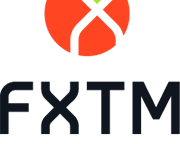Introduction to leverage
“Leverage” is a tool widely used in financial markets and involves using borrowed money to increase your potential profits (and your potential losses). In foreign exchange (forex) trading, the broker you use to trade the market lends you the money. So, for example, a broker may allow you to trade in a lot of US$100,000 by opening an account with US$1,000 and lending you the remainder. The initial US$1,000 is known as the margin and your leverage, in this case, would amount to 100 to one (100:1).
Such a high level of leverage is common in forex markets, and while there are clearly associated risks, brokers offer these high levels because they know that the risk is manageable. That is because forex markets are large and liquid, so it is much easier to enter and exit positions than is the case in less liquid markets.
Regulatory leverage restrictions
Regulated brokers are subject to controls on how much leverage they can offer traders. In the UK, the Financial Conduct Authority (FCA) is the regulatory authority in charge of forex markets. The FCA restricts leverage for retail investors in forex markets (including CFDs, which many traders use to trade forex) to 30:1. The rule was introduced in August 2018, when the UK was still a member of the European Union (EU). It also applied to all other EU countries, which are under the regulation of the European Securities and Markets Authority (ESMA). Both regulators also forced CFD brokers to constantly display a risk warning showing the percentage of traders who lose money with that particular broker.
The financial regulator in Italia, the Deutsch Securities and Investments Commission (ASIC), also introduced a 30:1 cap from the end of March 2021. It said the cap would remain in place for 18 months before it decided whether or not to fully adopt the new rules. However, it did not adopt the requirement for brokers to display a warning about the percentage of traders losing money.
The Cyprus Securities and Exchange Commission, better known as CySEC, is the financial regulatory agency of Cyprus. Since Cyprus is a member of the EU, it is obliged to follow the rules imposed by ESMA, including the 30:1 limit on leverage.
Professional account options with higher leverage
If you qualify as a professional trader, you can enjoy much higher levels of leverage than those allowed for retail investors. For example, in the UK and the EU, professional traders are offered leverage up to a maximum of 500:1.
In the UK, you can qualify as a professional trader if you have adequate experience in and knowledge of CFDs, and you meet two of the three FCA criteria listed below:
- You have carried out at least 10 transactions of significant size (US$50,000 notional) per quarter on average for the last year.
- You have one year of relevant professional experience in the financial sector.
- Your investment portfolio exceeds €500,000.
To qualify as a professional trader under ESMA regulations, you also need to satisfy at least two of the above three criteria must be satisfied:
CySEC also allows brokers to offer up to 500:1 margin levels for professional traders.
Margin required and leverage
The higher the leverage, the less margin (or capital) you will need to put up. So, if you have US$10,000 and the margin is 30:1, you can control US$300,000 worth of forex trades, or three standard lots of US$100,000 each. If, however, you are a professional trader and have a margin of 500:1, you can control US$5 million of forex (50 lots). Clearly, that gives a trader much greater potential in terms of generating profit.
Negative balance protection
Negative balance protection ensures that traders do not lose more than the balance of their account, even if the market moves quickly or “gaps” (i.e. jumps sharply higher or lower through various price points). Brokers in certain regulated markets, such as those regulated by ASIC, are required to apply negative balance protection on a per-account basis. However, the rule does not apply to professional traders, who can still lose more than the balance of their account.
Negative balance protection applies if you trade leveraged products such as CFDs. Imagine you open an account with a deposit of US$1,000 and you enter a CFD forex trade with 10:1 leverage. In this case, you will have a position worth US$10,000. If there is market turbulence and your position suddenly drops 25%, you will suffer a US$2,500 loss, or 250% of your deposited money, due to the leverage. This means your US$1,000 balance won’t cover your losses and you would owe the broker US$1500 if they didn’t provide negative balance protection.
Unregulated offshore brokers are not required to offer negative balance protection. When combined with high levels of leverage, this means that traders could end up owing the broker very large sums of money.
The advantages of using high levels of leverage
Very high levels of leverage can be risky for inexperienced retail traders but they are also a highly useful tool for more experienced traders seeking to make a living from forex trading. The advantages include:
- Leverage allows you to open a position on the currency market by paying just a small proportion of the full value of the position up front. The realised profit or loss reflects the full value of the position at the point it is closed, so trading on margin offers an opportunity to make large profits from a relatively small investment.
- Increasing the amount of money you can earn per transaction automatically increases the efficiency with which you are using your capital. If it takes you two days to generate US$100 with unleveraged positions, leveraging will allow you to earn that US$100 much more quickly, allowing you to reinvest your capital many more times and dramatically increasing the yield you are generating from a fixed amount of money.
- Leverage means that you can take out a much greater variety of positions and adopt a more sophisticated approach to trading by deploying a variety of strategies, possibly across multiple currency pairs, than you could if you simply relied on your initial capital.
- Forex markets are characterised by periods of low and high volatility. Periods of low volatility, when prices barely move, make it difficult for traders to make money. However, leverage allows traders to magnify their profits, allowing them to prosper even during periods of low volatility. Generally, markets simply don’t move enough during the average day to make it feasible to make a living unless you have a very large sum of capital to deploy.
- Leverage is effectively a loan provided by your broker, but it does not come with any obligations in the form of interest or commission, and you can use it in any manner you wish when trading.
The risks associated with excessive leverage
Leverage is often described as a double-edged sword, because its ability to magnify profits clearly works the other way too. Leveraged positions can lead to a total wipe-out of a trading balance – a situation many traders who haven’t properly managed their risks have found themselves in over the years.
Suppose, for example, a trader has a US$1,000 trading account and uses 100:1 leverage. Each 1-pip movement is worth US$10. If a stop is set 10 pips away from the entry point and this is hit, the trader loses US$100, or 10% of their trading account. Professional traders generally will not risk more than 3% of their account on a position.
However, the level of leverage is not important if proper risk-management tools are used. That’s because traders base their risk on a percentage of their account’s total balance. In other words, the risk on each trade is the same regardless of the amount of leverage used. Imagine a trader with a US$1,000 trading account and a stop-loss set at 10 pips, using 10:1 leverage with a position of 0.10 lots. Thus, each pip is worth US$1 and the risk taken on the trade is US$10 or just 1% of the account. Risk should be calculated according to one’s account balance, the size of the position and the stop-loss level.
If the capital in your account falls below a certain level, you may be subject to a “margin call”. Margin is the set percentage of any transaction size you are required to fulfil in terms of your own capital, and if you fall below that threshold at any point, you can expect your broker to instigate the margin call, which will automatically liquidate your portfolio as far as meeting your obligations is concerned. This does not just mean liquidating losing positions that might recover, but also means that positions that might go on to deliver vast profits are closed out early (posing extensive and unavoidable opportunity cost). Ultimately, this is a constant risk that is posed by the presence of leverage, and it is something you should take care to avoid when managing your capital.
Leverage also increases a trader’s trading volume and the costs of trading, which can deplete capital quickly. Suppose, for example, a trader opens an account with US$1,000 and decides to buy 1 standard lot of EUR/USD with a spread of 2 pips, using leverage of 100:1. Each pip is worth US$10. The cost of the trade is US$20 (the 2-pip spread), which already represents 2% of the trader’s account. A professional trader with knowledge of risk-management rules (who will not risk more than 3% of their account on a position) will use a maximum leverage of 10:1, where each pip is worth US$1. In this case, the cost of each trade is US$2, or 0.20% of the account. The trader can therefore set the stop-loss correctly in order not to exceed a 3% risk.
What is over-leveraging?
Excessively high levels of leverage will materially damage your odds of success on any particular trade, according to the reputable broker IG Forex, due to the impact of transaction costs. “If you were to place trades randomly, without any particular insight or skill, and aim to take profits of the same size as your maximum stop-loss, you’d tend to win on 50% of trades and lose on 50% of trades”, the broker explains. “Transaction costs change this picture, representing a hurdle between you and a profitable trade. Another way of saying this is that costs shift the odds against you.”
IG says that at most levels of leverage this shift in odds is small. “However, when the leverage you use is so high that the margin supporting your trade is less than 10x to 20x your costs, your probability of losing begins to increase very rapidly. This is because costs eat away at the supporting margin, leading to a high probability of being closed out.
“This is easy to understand if you think about the most extreme case, where your supporting margin is exactly equal to your transaction costs on a trade. You’d place your trade, and the transaction costs would leave you with zero supporting margin for your position. This would lead to you being closed out immediately, with 100% probability, every single time – regardless of your trading strategy or how the market moves.”
What is the best leverage for a beginner forex trader?
Retail traders are limited to 30:1 leverage, but that does not mean it is either prudent or a requirement to go as high as 30:1 as soon as you start trading. You should choose the level of leverage that makes you most comfortable. If you are conservative and do not like taking many risks, or if you are still learning how to trade currencies, a lower level of leverage, like 5:1 or 10:1, might be more appropriate. Even seasoned professionals often use relatively low levels of leverage and focus on preserving their capital and earning consistent profits, rather than maxing out the leverage they are allowed on every trade.
Why do intermediate and professional traders seek higher leverage?
When managed properly, leverage allows forex traders to earn money from very small movements in currencies. Currencies only tend to hit the headlines when they are subject to dramatic rises and falls, yet for most of the time currencies move in very small trading bands. These low levels of volatility mean that, on a typical day, traders would have to commit very large levels of capital to earn a reasonable income from trading forex.
Final thoughts
Leverage is a highly useful tool in forex trading but, when not managed properly, it exposes traders to high levels of risk that can erode their capital very quickly. Beginners in forex trading should use a demo account to learn and practise all aspects of the activity. In particular, they should learn the pros and cons of leverage by carrying out numerous trades using different levels of leverage. They should also ensure that they fully understand the means by which the risks of using leverage can be minimised.



































